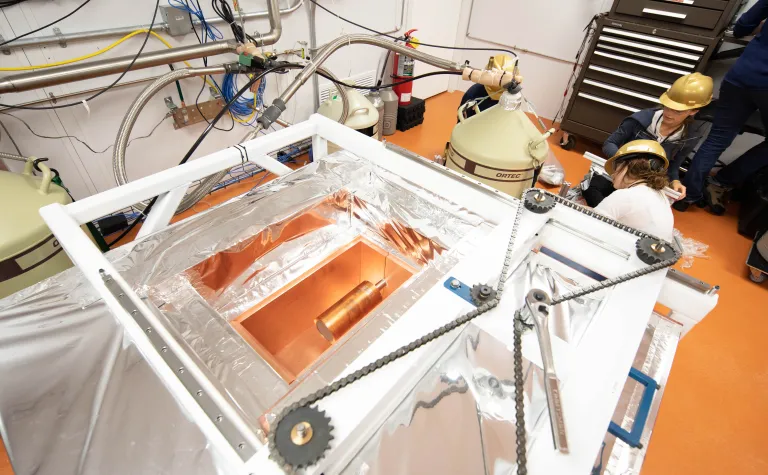LZ researchers build experiment themed video games and activities for Dark Matter Day
In their spare time after work, researchers working on LUX ZEPLIN at SURF built a set of interactive video games that mimic aspects of the world-leading dark matter detector. The games were a smash hit at the celebration of Dark Matter Day in Lead.
Programming hundreds of lines of code and building hardware for two interactive video games that accurately mimic aspects and location of the world’s leading dark matter detector would be a daunting task for many of us.
But for Kate Lawes and the team of researchers with the LUX ZEPLIN (LZ) experiment, this is something you can accomplish with just a few weeks notice, during your leisure hours, after your day job at the deepest underground lab in the United States, the Sanford Underground Research Facility (SURF).
“Like most people in science, I love being able to communicate this work that we are passionate about,” said Lawes, who is a third year Ph.D. student at Kings College London working on LZ. “I fairly recently started working more with the LZ sims software, and have been wanting to get back into electronics, so when a colleague suggested we organize some stuff for Dark Matter Day here at SURF, it seemed like a good excuse to try making something interactive to get the kids interested.”
One of the video games Lawes and the team put together mimics what happens when a dark matter particle interacts with the liquid xenon inside the inner chamber of the detector. Gavin Cox, a research scientist at SURF who works on LZ, built the circuit board and a button for players to push. The harder the push the bigger the interaction.
“Gavin did an incredible job making an actual working arcade button only hours before the event,” Lawes said. “It really made it feel like a proper interactive activity and was lovely to see people getting involved. We all agree it was very funny to watch small children throw their entire body weight into that button.”
Another video game the team produced simulates the placement of a dark matter detector underground—allowing players to change variables such as detector depth, shielding thickness, and target volume. George Homenides, a third year Ph.D. student at the University of Alabama, and Tea Hall, a third year Ph.D. student at the University of Liverpool, assisted Lawes in making the computer program mimic the actual detector.
“Tea was very impressed with the quality of detectors some of the children made using the shielding demo - pretty much perfectly calibrated,” Lawes said.
The annual celebration of Dark Matter Day at SURF coincided with Halloween and brought more than 580 people though the Sanford Lab Homestake Visitor Center. The video games were not the only Dark Matter Day activities. Lawes also sourced a childhood friend, Stephanie Fowle, who is an illustrator for educational materials. “So, she’s to thank for the absolutely beautiful coloring and activity sheets. I had some ideas but there’s no way I could have put them into practice without her,” Lawes said.
One part SURF’s mission is to inspire learning across generations. Julia Delgaudio, an experiment support scientist at SURF notes that bringing this mission to life can be a lot of fun.
"My favorite moment of the evening was when this one kid finished playing with the simulator and talking to Kate and Tea, and he came right over to the activity table and started coloring on one of the activity sheets,” Delgaudio said. “He was on a mission, stopping first to talk to Kate and utilize the button, then moving on to interrogate Tea about shielding. He never missed a beat with his coloring, as he simultaneously started relaying everything he had just learned. He seemed pretty excited to be there, and I loved his enthusiasm."
This might not be the last time the interactive activities developed by Lawes and the LZ team are shared with the public. Plans are underway to see a return of these activities in the future, including at Neutrino Day and maybe as a more permanent exhibit at the Sanford Lab Homestake Visitor Center.



